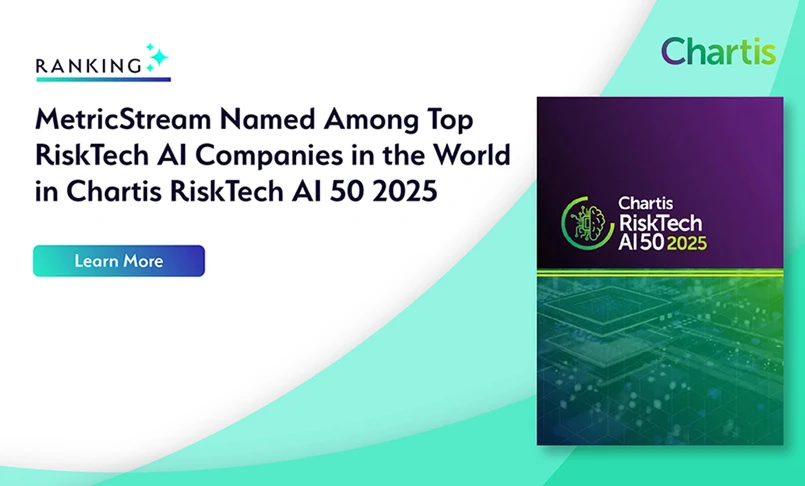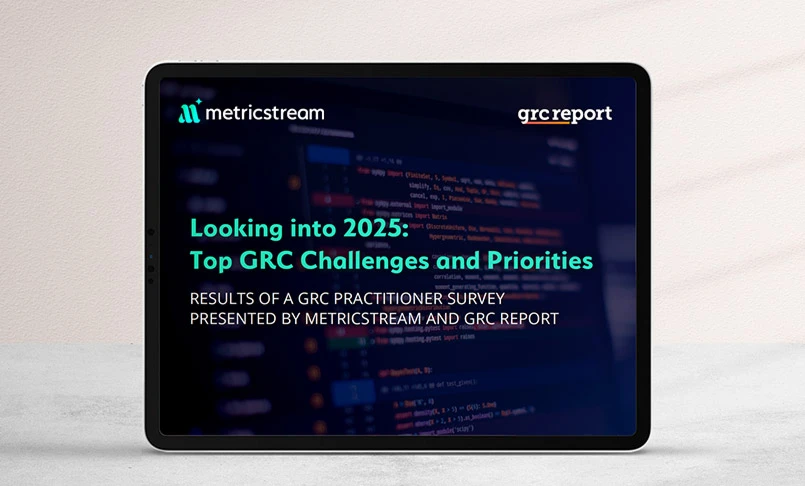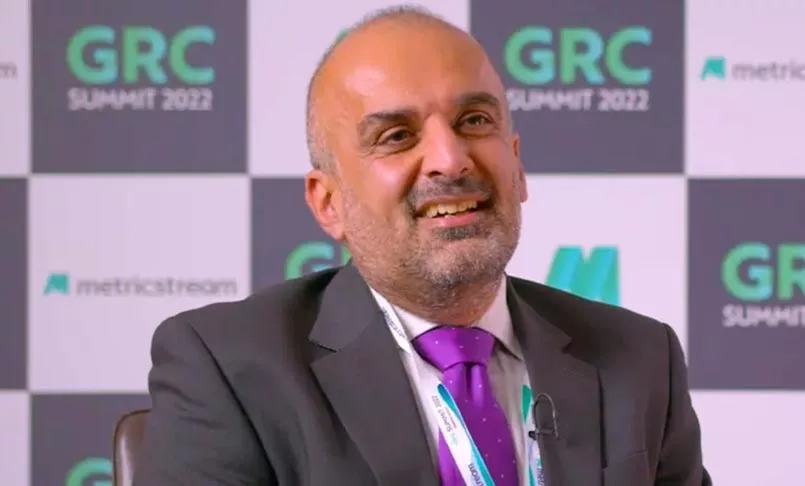AI in Compliance: Navigating Global Regulations in the Era of AI and Automation
- Compliance Management
- 10 July 25

Introduction
We live in uncertain times marked by geopolitical tensions, economic disruption, regulatory change, and the rapid emergence of advanced technology. As a result, the compliance function has to evolve to keep pace with the developments in the macro environment. What are the top trends shaping the regulatory landscape today? And how can enterprises improve their compliance posture?
Michael Koenig, JBS's Global Chief Ethics and Compliance Officer, and I discussed the challenges of modern compliance management in a webinar titled “Decoding Global Compliance in 2025: Navigating the Complex Regulatory Landscape.” Here are the key takeaways from the discussion.
Watch the webinar now: https://info.metricstream.com/webinar/decoding-global-compliance-in-2025.html
Strengthening Response to Regulatory Pressures
85% of respondents in a PwC study feel that compliance requirements have grown increasingly complicated over the last 3 years. A challenging regulatory environment has resulted in escalating cost of compliance – an average of USD 1.9 billion annually. And the cost of non-compliance is even higher--hefty penalties, fines, and irreparable damage to stakeholder trust and reputation. Under these circumstances, organizations need to proactively monitor the environment for changes, and continuously improve their strategies to ensure there are no gaps. It is now a matter of strategy, and compliance officers must act as advisors rather than policy cops. They have a crucial role to play in building cross-functional partnerships to drive a culture of shared accountability.
Navigating a Shifting U.S. Regulatory Landscape
At the moment, the world is trying to fully understand two key developments and assess their impact on business:
- Global tariffs announced by the Trump administration in April 2025
- President Trump’s Executive Order to temporarily pause enforcement of the FCPA.
Tariffs and Their Compliance Implications
- Tariffs pose a significant risk as they impact international relations, and may result in counter tariffs, and even a possible trade war.
- Teams must also monitor and be prepared for changes in the rules – some have already been paused, and some countries are renegotiating trade deals.
- They also have to prepare for escalating geopolitical tensions and retaliatory action that might impact multinational operations.
The FCPA Impact on Compliance
On the regulatory front, President Trump issued an executive order that put a temporary 180 day pause in the Foreign Corrupt Practices Act (FCPA). But this does not mean that American companies now have a free pass to do as they please for business benefits.
- The Act has only been paused and not repealed by Congress. It may be reinstated eventually, and subsequent administrations can bring it back in full force
- It only applies to the Department of Justice while the SEC is still free to enforce it.
- The 180-day pause does not exempt corporate conduct during that period. Companies can be tried for violations after the current presidential term is over as the statute of limitations under the Act extends beyond 2029.
- Organizations still have to align with state level and international laws like UK’s Bribery Act, and the EU Anti-Corruption Laws.
The disruption in the FCPA does not mean that organizations can simply forget about it. They must use this time to reevaluate their self-governance programs to ensure ethical and transparent practices.
Read my thoughts on the subject: The Pause in FCPA Enforcement – Why Self-Governance Matters Now More Than Ever
Building AI Governance into Compliance Strategy
Keeping pace with rapidly changing laws and macroeconomic developments can be impossible to achieve without a robust technology foundation. Artificial Intelligence, in particular, can ensure real time monitoring and provide intelligent insights for better decision making. Understandably, it is quickly becoming a compliance priority. But AI cannot be integrated in isolation or in an ad hoc manner.
- It must be deeply aligned with business strategy and securely integrated with existing IT infrastructure.
- Low-code/no-code platforms have made it easy for business users to start using AI tools. But this can lead to the creation of a shadow IT, and pose security, ethical, and legal risks.
- Companies must create centralized, standardized AI governance code for the use of AI tools.
- Organizations must establish clear standards on how AI can be trained, deployed, and monitored.
Reimagining Regulatory Compliance with Agentic AI
The emergence of agentic AI models can further improve compliance efficiency with their ability to work autonomously with humans in the loop. Organizations are already using AI to automate routine regulatory tasks. Some of the use cases of generative and agentic AI in regulatory change management are:
- Fully automate tasks like monitoring alerts, evaluating applicability, rejecting irrelevant ones, and notifying stakeholders.
- Handling the creation of regulatory developments, mapping of regulatory bodies, stakeholder identification, task assignments, and impact analysis.
- Automatically generate risk summaries, perform risk analysis, and create tasks related to evidence gathering, policy updates, and tabletop assessments.
- Independently trigger assessments, determine inherent and residual risk ratings, and evaluate control effectiveness.
- Provide ready to review approval steps across development, impact analysis, and risk assessment for human oversight, ensuring compliance, judgment, and accountability remain intact.
Policy Management
- Agentic AI can monitor the regulatory landscape and alert relevant stakeholders to make necessary policy changes when laws change. This can help organizations avoid any inadvertent violations
- It can autonomously adjust internal policies and processes in accordance with regulatory changes
- It can independently draft policy templates based on pre-set rules
- It can help teams seamlessly manage reviews, approvals, and dissemination by triggering relevant workflows
- It can track employee acknowledgment and training completion
Compliance Risk Management
- Agentic AI can analyze large volumes of enterprise data, ranging from transactions to communications, to identify risks
- It can identify patterns and correlate them to earlier compliance incidents and raise alerts proactively and in real time
- It can continuously monitor the business environment for risks and alert teams to possible violations.
Agentic AI can significantly reduce operational pressures and free up compliance teams to focus on strategic priorities like stakeholder engagement, training, and culture building. But this is not to say that AI can completely replace the human element in compliance. The technology is a valuable tool for delivering intelligent insiously monitor the business environment for risks and alert teams to possible violations. ghts across a range of functions quickly and accurately. But final decision-making power must rest in the hands of the humans using the technology.
Compliance has evolved from being a static and restrictive or preventive function to being a strategic, technology-powered, and continuous journey that keeps pace with a rapidly changing regulatory landscape. Modern compliance is also not relegated to one department alone; it extends to the entire organization and needs active involvement of cross-functional teams. And it must be deeply embedded in organizational culture - true compliance culture is when everyone does the right thing, even when nobody’s watching.
Watch the webinar recording for more insights:
AI-First Compliance Management Starts Here
Transform your compliance management with MetricStream's AI-first Compliance Management solution. It empowers organizations to adopt an integrated, cost-efficient approach to managing cross-industry regulations while enhancing visibility and reducing redundancies.
Use the power of AI to automatically ingest regulatory updates, map your compliance profile, test controls, and gather evidence, ensuring continuous regulatory effectiveness. Simplify policy management and streamline compliance processes, including:
- Mapping regulations to processes, assets, risks, controls, and issues
- Identifying, prioritizing, and monitoring high-risk compliance areas
- Performing automated control testing and continuous monitoring
- Creating, managing, and communicating corporate policies
- Capturing and managing the impact of regulatory changes
- Managing incidents and cases for better corrective and preventive actions
- Generating detailed reports with drill-down capabilities
Want to see it in action? Request a personalized demo today!








